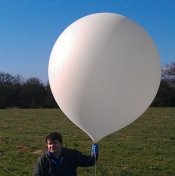 Until recently, I knew nothing about High Altitude Balloon Tracking, until local amateur Chris Stubbs M6EDF got in touch via our Monday Night Net. As there were some balloon flights over the weekend, I thought I’d try and track them, and here’s how I got on…
Until recently, I knew nothing about High Altitude Balloon Tracking, until local amateur Chris Stubbs M6EDF got in touch via our Monday Night Net. As there were some balloon flights over the weekend, I thought I’d try and track them, and here’s how I got on…
Around the world, enthusiasts get together to let off helium-filled weather balloons with a payload of camera, GPS trackers and radio transmitters, and then use a network of trackers to plot the journey of the balloon, then pinpoint the landing site and retrieve the payload.
On Sunday the 5th of May 2013, two balloons were released from a location to the west of Cambridge, and I was able to track the second one very well.If you prefer watching to reading, here is a short video clip of my experiences:
4 Min Video: Tracking High Altitude Balloons |
Signals from the balloons were on the 70cms band, but single sideband, so my standard rig couldn’t get the signals. So, I used an SDR, Software Defined Radio. The one I went for was my cheap-and-trusty Realtek RTL2832 dongle. This costs around £10 and plugs into a computer or laptop USB socket. This was connected to my main 2m/70cm collinear on the roof.
Next – Software: I used the free package SDR Sharp – This package lets you tune into the correct frequency and set USB. Flights are announced on the ukhas.org.uk site, and frequencies are given. The flight I track,ed was using was on 434.244MHz – Here is what the signal looked like on the SDR# package. The two narrow bars are essentially packets of RTTY data.
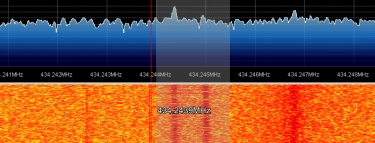
Next, I used DL-FLDigi to decode the packets. It took a while to get the software to recognise the audio from the SDR, and some juggling to get everything working, but eventually, packets were being received and decoded.
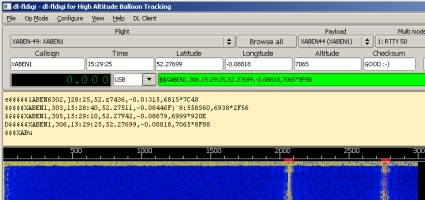
Now the clever bit. On the website spacenear.us , there’s a realtime-tracker that shows the location of the balloon, based on uploads from spotters like me. My spots were appearing on the map showing the path of the balloon.
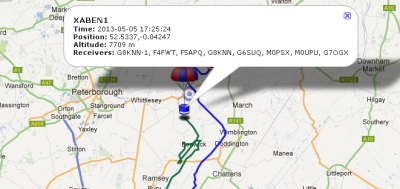
The various spotters, and the balloon owners, all hang out in an IRC chatroom, and a good dozen or so other folk were tracking the flight too. Following the balloons were the owners in a chase car, ready to recover the payload. The balloon I tracked covered a distance of around 12 mile due North over around 2 and a half hours, touching down between Peterborough and March. The tracking site shows altitude against time, and the eventual landing site, almost in a river.
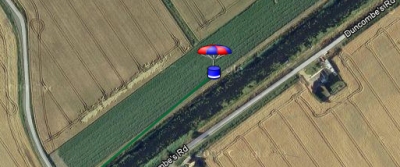
It’s always fun to try something new radio-wise, and I’ll certainly be trying a little balloon tracking again. Well done to today’s balloonists, and thanks to Chris Stubbs M6EDF, owner of one of today’s payloads, called CHEAPO, for introducing me to this activity.
For a quick how-to guide, and more information on how I was able to track these balloons, see our guide here: How to track High Altitude Balloons

